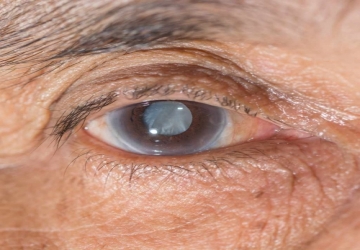
Diagnosis of cataracts
With the question of Dr. Muhammad Hantira, an honorary assistant professor, ophthalmology department Umm Al-Qura University, Saudi Arabia
It was clear that when starting to diagnose cataracts, a comprehensive eye examination and vision evaluation would be performed through some tests, including:
• Checking the eye chart to ensure the level of vision at different distances.
• Eye pressure measurement.
• Tonometry examination.
• Dilation of the pupils of the eye using eye drops designed to check the optic nerve and retina.
• Check color and glow sensitivity test.
Cataract treatment
Dr. Hantira explained:
He considers that surgical intervention to treat cataracts in the eye is the only solution to get rid of the problem of cataracts, while there are several other treatment methods that the doctor may resort to to postpone the surgical intervention.
Among these methods are the following:
• Changing eyeglass lenses with stronger lenses to improve vision.
• Use a magnifying glass for reading.
• Use of anti-glare lenses.
• Treatment of cataract surgery
Surgical intervention is the only solution to treat the cataract problem, in the event that other treatment methods fail, which would affect the safe practice of daily activities.
Methods of surgical treatment include the following:
• Using ultrasound to break up the lens and remove the pieces that cause opacity.
• Removal of the cloudy part of the lens through a long incision in the cornea.
• Putting a lens inside the eye instead of the natural lens.
It is worth noting that the cataract operation takes a little time, not more than 20 minutes.
Complications of cataract surgery
Dr. Hantereh indicated:
Noting that cataract surgery is a safe surgical procedure, but like any other surgery, the patient may experience some rare complications.
Among them:
• Exposure to an infection during surgery.
• Exposure to bleeding.
• Retinal detachment.
• The incidence of opacity of the back wallet.
It is worth noting that these complications are rare, and their incidence does not exceed 1% of all cataract surgeries.